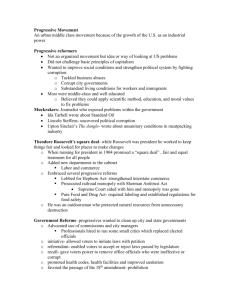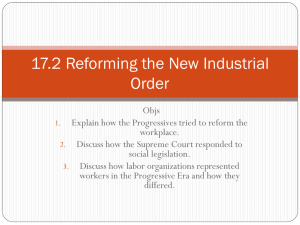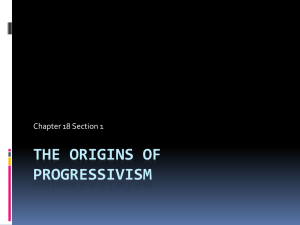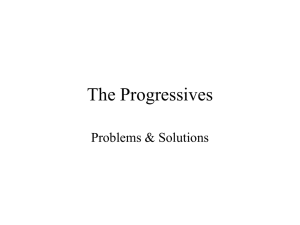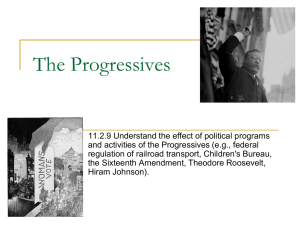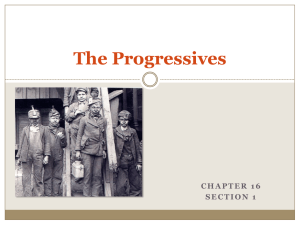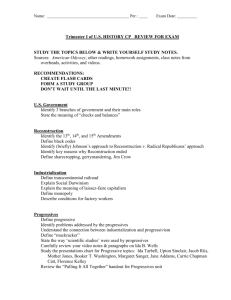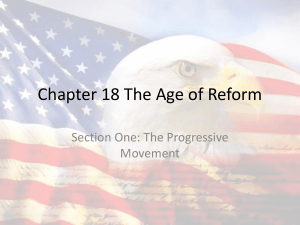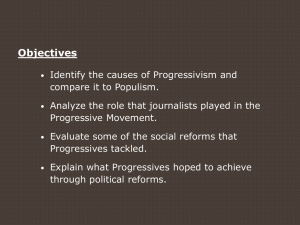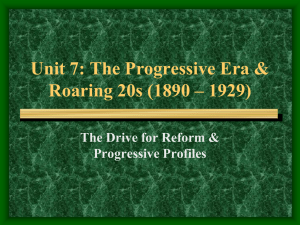AP Ch_ 20 Study Guide
advertisement
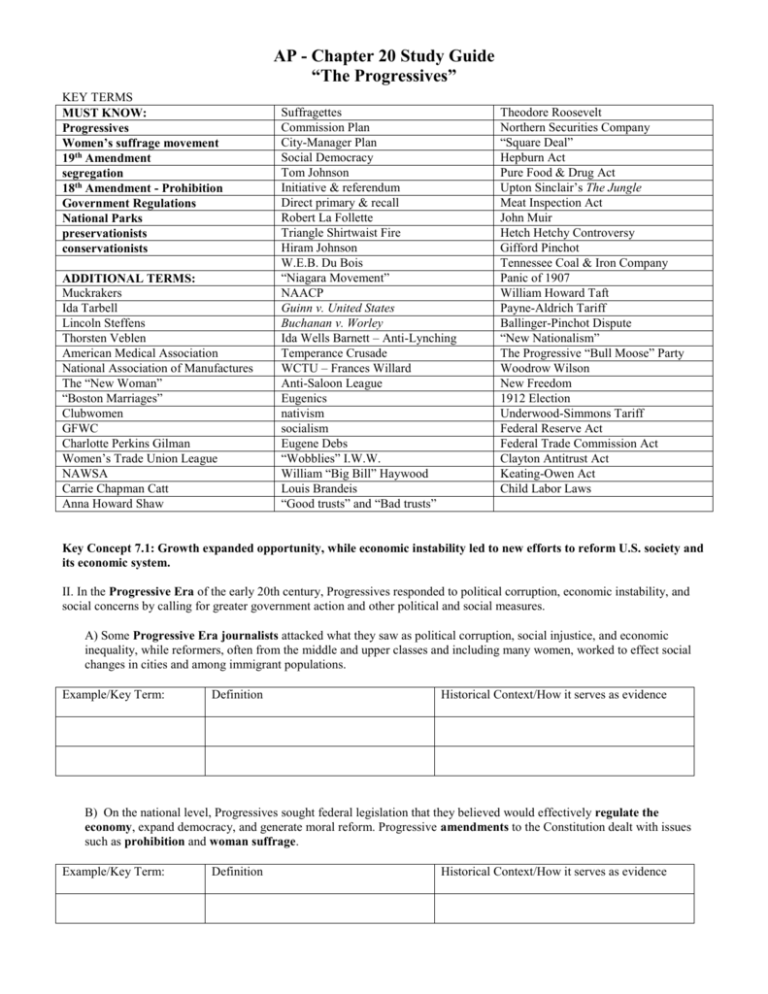
AP - Chapter 20 Study Guide “The Progressives” KEY TERMS MUST KNOW: Progressives Women’s suffrage movement 19th Amendment segregation 18th Amendment - Prohibition Government Regulations National Parks preservationists conservationists ADDITIONAL TERMS: Muckrakers Ida Tarbell Lincoln Steffens Thorsten Veblen American Medical Association National Association of Manufactures The “New Woman” “Boston Marriages” Clubwomen GFWC Charlotte Perkins Gilman Women’s Trade Union League NAWSA Carrie Chapman Catt Anna Howard Shaw Suffragettes Commission Plan City-Manager Plan Social Democracy Tom Johnson Initiative & referendum Direct primary & recall Robert La Follette Triangle Shirtwaist Fire Hiram Johnson W.E.B. Du Bois “Niagara Movement” NAACP Guinn v. United States Buchanan v. Worley Ida Wells Barnett – Anti-Lynching Temperance Crusade WCTU – Frances Willard Anti-Saloon League Eugenics nativism socialism Eugene Debs “Wobblies” I.W.W. William “Big Bill” Haywood Louis Brandeis “Good trusts” and “Bad trusts” Theodore Roosevelt Northern Securities Company “Square Deal” Hepburn Act Pure Food & Drug Act Upton Sinclair’s The Jungle Meat Inspection Act John Muir Hetch Hetchy Controversy Gifford Pinchot Tennessee Coal & Iron Company Panic of 1907 William Howard Taft Payne-Aldrich Tariff Ballinger-Pinchot Dispute “New Nationalism” The Progressive “Bull Moose” Party Woodrow Wilson New Freedom 1912 Election Underwood-Simmons Tariff Federal Reserve Act Federal Trade Commission Act Clayton Antitrust Act Keating-Owen Act Child Labor Laws Key Concept 7.1: Growth expanded opportunity, while economic instability led to new efforts to reform U.S. society and its economic system. II. In the Progressive Era of the early 20th century, Progressives responded to political corruption, economic instability, and social concerns by calling for greater government action and other political and social measures. A) Some Progressive Era journalists attacked what they saw as political corruption, social injustice, and economic inequality, while reformers, often from the middle and upper classes and including many women, worked to effect social changes in cities and among immigrant populations. Example/Key Term: Definition Historical Context/How it serves as evidence B) On the national level, Progressives sought federal legislation that they believed would effectively regulate the economy, expand democracy, and generate moral reform. Progressive amendments to the Constitution dealt with issues such as prohibition and woman suffrage. Example/Key Term: Definition Historical Context/How it serves as evidence AP - Chapter 20 Study Guide “The Progressives” C) Preservationists and conservationists both supported the establishment of national parks while advocating different government responses to the overuse of natural resources. Example/Key Term: Definition Historical Context/How it serves as evidence D) The Progressives were divided over many issues. Some Progressives supported Southern segregation, while others ignored its presence. Some Progressives advocated expanding popular participation in government, while others called for greater reliance on professional and technical experts to make government more efficient. Progressives also disagreed about immigration restriction. Definition Historical Context/How it serves as evidence Example/Key Term: Additional Examples:

